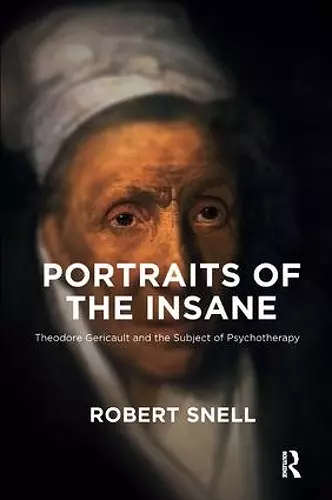Portraits of the Insane
Theodore Gericault and the Subject of Psychotherapy
Format:Paperback
Publisher:Taylor & Francis Ltd
Published:28th Sep '16
Currently unavailable, and unfortunately no date known when it will be back
This paperback is available in another edition too:
- Hardback£125.00(9780367103255)

In the early 1820s, in the gloomy aftermath of the 1789 Revolution and the Napoleonic wars, the French Romantic painter Theodore Gericault (1791-1824) made five portraits of patients in an asylum or clinic. No depictions of madness before or since can compare with them for humanity, straightforwardness and immediacy. Why were they painted? For whom? Art-historical ways of accounting for them open up questions about the nature of psychoanalytic interpretation. The portraits challenge us to find responses in ourselves to the face and the embodied mysteries of the other person, and to our own internal (unsconscious, disavowed) otherness: in this sense, Gericault was a "painter-analyst". The challenge could not be more urgent, in our world of suspicion of the stranger, and of the medicalisation of madness. The book sketches the history of this last process, from the Enlightenment through to the Revolution and its public health policies, to the birth of the asylum in its interface with the penal system. But there was also a new medico-philosophical conviction that the mad were never wholly mad, and their suffering and disturbance might best be addressed through relationship and speech. For contemporaries like Stendhal and Hegel, we are all split subjects. The portraits, painted during a period of unprecedented social, cultural and economic transformation, on the threshold of modernity, register a critical moment in the history of psychotherapy and psychiatry, and of the human subject itself. They help us grasp and give proper value to some of the living roots of psychoanalysis.
'The scope of this book is remarkable. Robert Snell's meditation on five portraits of mad people by Gericault is the springboard for a fascinating cultural investigation. He surveys two centuries of change in the understanding of human nature, and considers how this is reflected in changing approaches to the treatment of madness. The breadth and depth of scholarship on offer here is exceptional, and this admirable book is an object lesson in the relation of psychoanalysis to the history of ideas.'- Michael Parsons, British Psychoanalytical Society and French Psychoanalytic Association'This important book is for anyone interested in how history affects who we are. In a fascinating and rigorous account, Robert Snell shows us the link between emancipatory and repressive forces in ourselves, and such forces in society.'- Professor Del Loewenthal, Director of the Research Centre for Therapeutic Education, University of Roehampton, London'Gericault's depictions of the insane are among the most compelling images produced during the Romantic era in France. Robert Snell balances art-historical andpsychoanalytic readings in an interplay between biography, intellectual and cultural history, and the history of madness and post-Revolutionary painting. Insightful questions reveal the psychoanalyst's skilful probing, deftly integrated with keen visual analyses which clarify links between the paintings and their historical matrix. This is an original analysis, in a distinctive and engaging voice.'- Therese Dolan, Professor of Art History, Temple University, Tyler School of Art, Philadelphia, USA
ISBN: 9781782202479
Dimensions: unknown
Weight: unknown
256 pages